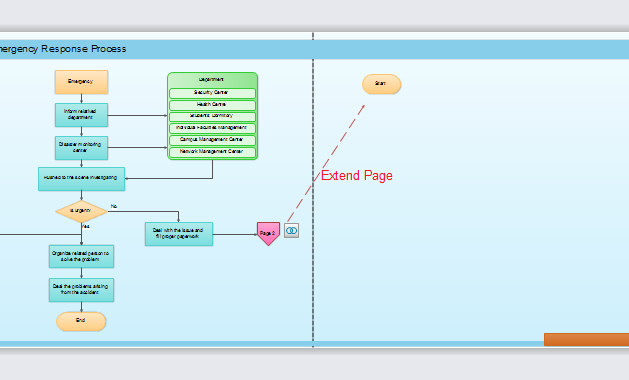
In today’s digital-first world, where consumers are bombarded with countless brand messages, the emotional connection between a brand and its audience has become more critical than ever. This is where brand sentiment signals come into play. These signals are not just about tracking likes or shares—they’re about understanding the emotional perception of your brand online. By analyzing these signals, businesses can gain deeper insights into how their audience feels, what drives loyalty, and where improvements are needed.
This article explores what brand sentiment signals are, why they matter in modern marketing, and how to track and enhance them effectively. Whether you’re a small business owner or a marketing professional, understanding and leveraging brand sentiment signals can significantly impact your brand’s reputation, customer loyalty, and overall success.
What Is Brand Sentiment Signals and Why It Matters
Brand sentiment signals refer to the emotional cues that consumers express online about a brand. These cues can be found in social media posts, reviews, customer feedback, and even in the tone of conversations around your brand. Unlike traditional metrics like sales or website traffic, sentiment signals offer a window into the emotional state of your audience—how they feel about your products, services, and overall brand experience.
These signals are crucial because emotions drive behavior. A positive sentiment can lead to increased engagement, repeat purchases, and word-of-mouth referrals. Conversely, negative sentiment can signal dissatisfaction, leading to churn and damage to your brand’s reputation.
For example, if customers consistently mention “trust” or “reliability” in their feedback, it shows that your brand is perceived as credible. On the other hand, if users frequently complain about poor customer service, it indicates a problem that needs immediate attention.
Understanding these signals allows brands to make data-driven decisions, adjust strategies, and build stronger relationships with their audiences.
How Brand Sentiment Signals Impact SEO Performance
While brand sentiment might seem like a marketing or customer service concern, it also plays a significant role in SEO performance. Search engines like Google are increasingly prioritizing user experience (UX), relevance, and trustworthiness when ranking websites.
Here’s how brand sentiment signals influence SEO:
1. User Engagement and Dwell Time
Positive sentiment often correlates with higher engagement metrics such as time on page, bounce rate, and click-through rates. When users have a positive emotional response to your content or brand, they’re more likely to stay longer, explore further, and share your content—factors that search engines recognize as indicators of quality.
2. E-E-A-T (Experience, Expertise, Authoritativeness, Trustworthiness)
Google’s E-E-A-T guidelines emphasize the importance of trust and authority. Brands with strong, positive sentiment signals are more likely to be seen as trustworthy, which can improve their rankings for competitive keywords.
3. Content Relevance and Authority
When users consistently engage with your content and express positive sentiment, it signals to search engines that your content is valuable and relevant. This can help your pages rank higher for related topics.
4. Brand Mentions and Backlinks
Positive sentiment can lead to more brand mentions and backlinks, especially from authoritative sources. These are key factors in SEO, as they signal credibility and relevance.
5. Local SEO and Reviews
For local businesses, sentiment signals from online reviews and social media play a huge role in local search rankings. A strong, positive sentiment can boost visibility in local searches and attract more customers.
Step-by-Step Implementation Framework
To effectively track and enhance brand sentiment signals, follow this structured approach:
1. Define or Audit the Current Situation
Start by assessing your current brand sentiment. Use tools like social listening platforms, review analysis software, and customer feedback surveys to gather data. Identify areas where sentiment is positive, neutral, or negative.
2. Apply Tools, Methods, or Tactics
Leverage advanced sentiment analysis tools that use AI and natural language processing (NLP) to categorize and analyze text. Examples include:
– Brandwatch: For real-time social media monitoring.
– Hootsuite Insights: For tracking brand mentions across multiple channels.
– Meltwater: For comprehensive media and sentiment analysis.
Additionally, consider using NLP-based tools like IBM Watson Tone Analyzer or MonkeyLearn to extract deeper emotional insights from customer feedback.
3. Measure, Analyze, and Optimize
Once you’ve collected data, analyze it to identify trends and patterns. Look for:
– Common themes in positive and negative feedback.
– Changes in sentiment over time.
– Areas where sentiment could be improved.
Use this data to refine your brand messaging, improve customer service, and adjust your marketing strategies accordingly. Regularly revisit your sentiment analysis to ensure continuous improvement.
Real or Hypothetical Case Study
Let’s take a hypothetical case study of a fictional tech startup called TechNova. The company launched a new app aimed at helping small businesses manage their finances. Initially, the app received mixed reviews—some users praised its ease of use, while others complained about its complexity and lack of support.
By implementing a brand sentiment analysis tool, TechNova discovered that the main pain point was the onboarding process. Users were frustrated with the lack of clear instructions and support.
The company responded by:
– Redesigning the onboarding flow.
– Adding a live chat feature for instant support.
– Publishing tutorial videos to guide users.
Within three months, the brand sentiment score improved significantly, with a 30% increase in positive feedback and a 20% reduction in negative mentions. This led to a 25% rise in app downloads and a 15% increase in user retention.
Tools and Techniques for Brand Sentiment Signals
Here are some of the most effective tools and techniques for tracking and enhancing brand sentiment signals:
- Brandwatch – Real-time social media monitoring and sentiment analysis.
- Hootsuite Insights – Comprehensive social listening and analytics.
- Meltwater – Media and brand sentiment tracking across global channels.
- IBM Watson Tone Analyzer – Advanced NLP for emotional tone detection.
- MonkeyLearn – Customizable sentiment analysis models for specific industries.
- Sprout Social – Social media management with built-in sentiment analysis.
These tools not only help you track sentiment but also provide actionable insights to improve your brand’s emotional perception.
Future Trends and AI Implications
As AI continues to evolve, the way we track and interpret brand sentiment signals will change dramatically. Here are some future trends to watch:
1. AI-Powered Emotional Intelligence
Future tools will go beyond basic sentiment analysis and incorporate emotional intelligence (EI), allowing brands to understand nuanced emotions like frustration, excitement, or disappointment.
2. Voice and Multimodal Analysis
With the rise of voice assistants and video content, sentiment analysis tools will begin to analyze voice tones and visual cues to provide a more holistic view of brand perception.
3. Real-Time Personalization
Brands will use sentiment data to personalize experiences in real time. For example, if a customer expresses frustration during a support call, the system could automatically escalate the issue or offer a discount.
4. Predictive Sentiment Modeling
Advanced AI models will predict how changes in branding, marketing, or product features might affect sentiment, allowing brands to make proactive adjustments.
To stay ahead, businesses should start integrating AI-powered sentiment analysis into their strategies now. This will not only improve customer satisfaction but also give them a competitive edge in an increasingly data-driven market.
Key Takeaways
- Brand sentiment signals are crucial for understanding how customers emotionally perceive your brand.
- They influence SEO performance, customer loyalty, and overall brand reputation.
- Using AI and NLP tools can help track and analyze sentiment more effectively.
- Continuous monitoring and optimization are essential for long-term success.
- Positive sentiment leads to better engagement, trust, and conversions.
By leveraging brand sentiment signals, you can create a stronger emotional connection with your audience, improve your SEO performance, and build a brand that resonates deeply with your customers.
Meta Title: Brand Sentiment Signals — Tracks and Enhances Emotional Perception Online
Meta Description: Learn how to track and improve brand sentiment signals to enhance emotional perception online and boost your brand’s reputation and SEO performance.
SEO Tags (5): brand sentiment, emotional perception, brand tracking, SEO strategy, customer feedback
Internal Link Suggestions:
– [Parameter #1: Search Intent Alignment]
– [Parameter #7: Semantic Keyword Mapping]
– [Parameter #18: Distinct Value Proposition]
External Source Suggestions:
– https://www.brandwatch.com/
– https://www.hootsuite.com/insights
– https://www.ibm.com/watson/tone-analyzer









